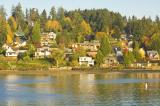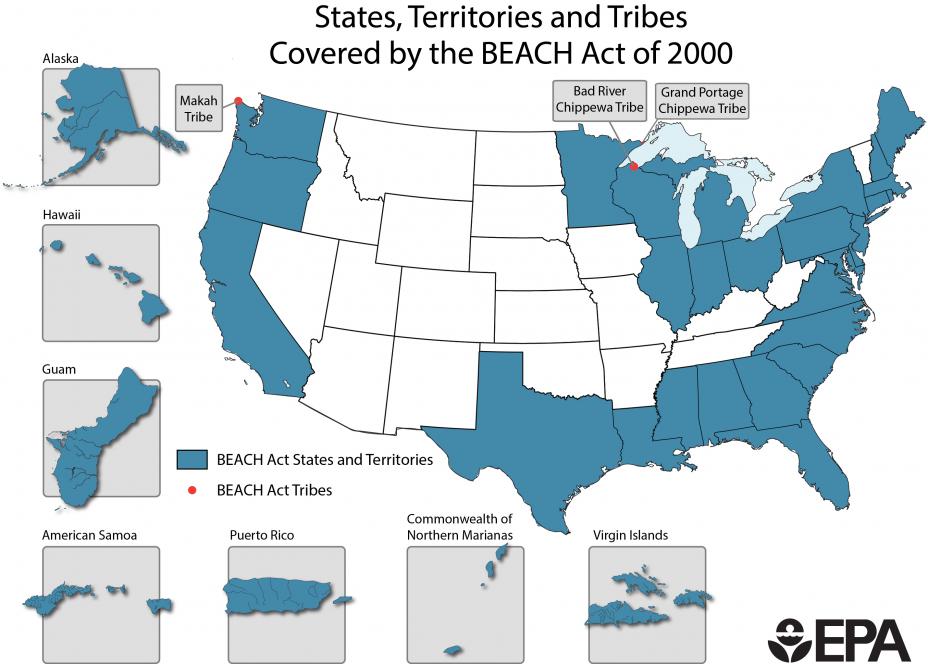LEARN: Beach Basics
Beaches are an important part of American life. In addition to the range of recreational opportunities they offer, beaches provide unique habitats for a variety of plants and animals. Beaches provide protection to residents living near the ocean by acting as a buffer against the high winds and waves of powerful storms, and help drive economic activity important to nearby communities.
However, pollution at the beach can result in swimmers getting sick or temporary beach closures that negatively affect the local economy. In addition, overuse by visitors can damage sensitive habitats, such as beach dunes, and create marine debris. The good news is that we can all help protect our beaches and our health.
Beaches Defined



A beach is the sandy, pebbly, or rocky shore of a body of water. Beach types vary widely, especially depending on where they are. When most of us think of a beach, we picture wide open sandy ocean beaches with waves crashing, wind blowing, seagulls flying overhead, and a backdrop of beach grass and sand dunes.
However, beaches in the United States are also found in urban areas, on estuaries and lagoons, and on lakes and rivers. A beach is also a sensitive environment that supports a variety of plants and animals.
Value of Beaches
Beaches provide many recreational opportunities for millions of people. Boating, fishing, swimming, walking, beachcombing, bird-watching, playing and sunbathing are among the common activities beachgoers enjoy. Beaches provide protection to residents living near the ocean by acting as a buffer against the high winds and waves of powerful storms or rough seas.
Beaches also play an important role in the economy. Spending time at an ocean beach is one of the fastest-growing nature-based outdoor activities in the United States
According to The Latest on Trends in Nature-Based Outdoor Recreation (National Academy of Sciences, 2008) (PDF) (7 pp, 928K, About PDF)
- An estimated 96 million people aged 16 or older made at least one visit to a U.S. ocean beach each year, between 2005 and 2008, according to the 2008 National Survey on Recreation and the Environment.
- Approximately 42 percent of the population 16 years and older visits an ocean beach each year, according to the 2008 National Survey on Recreation and the Environment.
Beach Protection
The BEACH Act of 2000
The Act defines coastal recreation waters as the Great Lakes and marine coastal waters (including coastal estuaries) that states, territories, and tribes designate in their water quality standards for use for swimming, bathing, surfing, or similar water contact activities.
Other EPA water resource programs
The Agency also works to protect beaches beyond those covered by the BEACH Act, such as those at freshwater lakes, ponds, and rivers outside of coastal areas.

EPA’s Annual Swimming Season Statistics contains more information on beaches covered under the BEACH Act.
